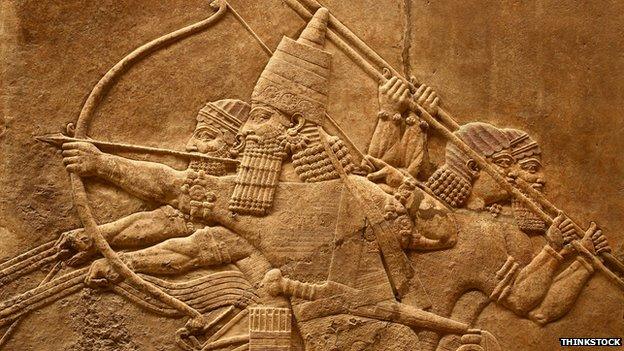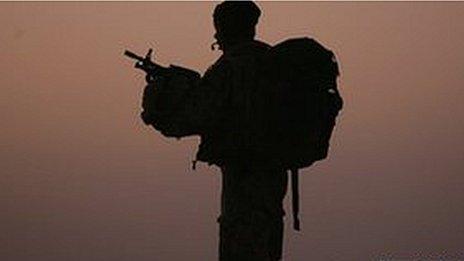Post-traumatic stress 'evident in 1300BC'
- Published

Evidence of post-traumatic stress disorder can be traced back to 1300BC - much earlier than previously thought - say researchers.
The team at Anglia Ruskin University analysed translations from ancient Iraq or Mesopotamia.
Accounts of soldiers being visited by "ghosts they faced in battle" fitted with a modern diagnosis of PTSD.
The condition was likely to be as old as human civilisation, the researchers concluded.
Prof Jamie Hacker Hughes, a former consultant clinical psychologist for the Ministry of Defence, said the first description of PTSD was often accredited to the Greek historian Herodotus.
Referring to the warrior Epizelus during the battle of Marathon in 490BC he wrote: "He suddenly lost sight of both eyes, though nothing had touched him."
His report co-authored with Dr Walid Abdul-Hamid, Queen Mary College London, argues there are references in the Assyrian Dynasty in Mesopotamia between 1300BC and 609BC.
Ghosts
In that era men spent a year being toughened up by building roads, bridges and other projects, before spending a year at war and then returning to their families for a year before starting the cycle again.

Potential triggers for post-traumatic stress disorder
Military conflicts
Natural disasters
Serious road accidents
Sexual assaults
Muggings

Prof Hacker Hughes told the BBC News website: "The sorts of symptoms after battle were very clearly what we would call now post-traumatic stress symptoms.
"They described hearing and seeing ghosts talking to them, who would be the ghosts of people they'd killed in battle - and that's exactly the experience of modern-day soldiers who've been involved in close hand-to-hand combat."
A diagnosis and understanding of post-traumatic stress disorder emerged after the Vietnam War. It was dismissed as shell shock in World War One.
Prof Hacker Hughes said: "As long as there has been civilisation and as long as there has been warfare, there has been post-traumatic symptoms. It's not a 21st Century thing."
- Published3 April 2014

- Published3 May 2011
